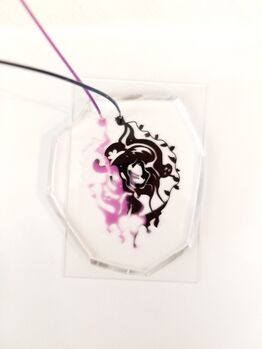Microfluidic Art - Savannah Szemethy
Background - From STEM to STEAM

Within the past 15 years, there has been a growing push to reform STEM (Science, Technology, Engineering, and Math) to include the Arts and thus become STEAM.1 Recent studies have shown that STEM-based education, especially engineering education at the university level, focuses too heavily on “chalk and talk,” or lectures that fail to engage students.2 Additionally, project-based engineering education is centered on reaching the “right” answer and punishing failure, even though failure is a tool for learning.2 With these strict educational methods, it is difficult for students to exercise any form of creativity or innovation, as they must follow formulaic, routine models in order to achieve the “right” outcome.2 As a result, students are left feeling discouraged with the belief that failure is ultimately negative and that nothing can be learned from it.2
Unlike STEM education, however, artistic education does not punish failure but instead grades students on their effort and creative thought process.2 Even if an art project is unsuccessful, a student can still achieve full marks so long as they put in effort and provide proof of careful thought and planning, which encourages students to follow their creativity and experiment with new methods.2 As a result, the STEAM movement has arisen to reform STEM education at the high school and classroom levels to incorporate this artistic educational practice to use failure as a learning tool and foster creativity and innovation within science.1,2,3,4,5 Much of early childhood education, in fact, has been employing a STEAM-based education model for years,3 so the challenge lies with reforming secondary and tertiary education, which is limited by this previously described notion of “disciplinary egocentrism.”2
Microfluidics and STEAM
Microfluidic devices are the perfect media to bridge the gap between art and science. Because of their small scales, microfluidic chips have a low Reynolds number, thus creating a very smooth laminar flow, allowing for the production of fluid-based artwork. Due to their low cost, these chips are a great way to incorporate STEAM into a college-level classroom and encourage students to complete creative projects.
Albert Folch
Albert Folch was one of the pioneers of microfluidic art. His lab focuses on the concept of BAIT,6 or Bringing Art Into Technology. BAIT focuses on the concept of integrating art and technology and the idea that someone can be "baited" into learning more about science through an appreciation of artwork.6
Microfluidics comprise a significant portion of Folk's artistic portfolio. The Folk lab's designs focus on geometric shapes, bright colors, and bold gradients.6
References
1. Maeda, J. The Steam Journal 2013, 1 (1), 1–3.
2. Connor, A. M.; Karmokar, S.; Whittington, C. International Journal of Engineering Pedagogy (iJEP)2015, 5 (2), 37.
3. Sharapan, H. YC Young Children 2012, 67.
4. Kim, Y.; Park, N. Communications in Computer and Information Science Computer Applications for Security, Control and System Engineering 2012, 115–121.
5. Yakman, G.; Lee, H. Journal of The Korean Association For Science Education 2012, 32 (6), 1072–1086.
6. Folch, A. ART. https://albertfolch.wixsite.com/folchlabhome/folchlabart (accessed Feb 22, 2019).
